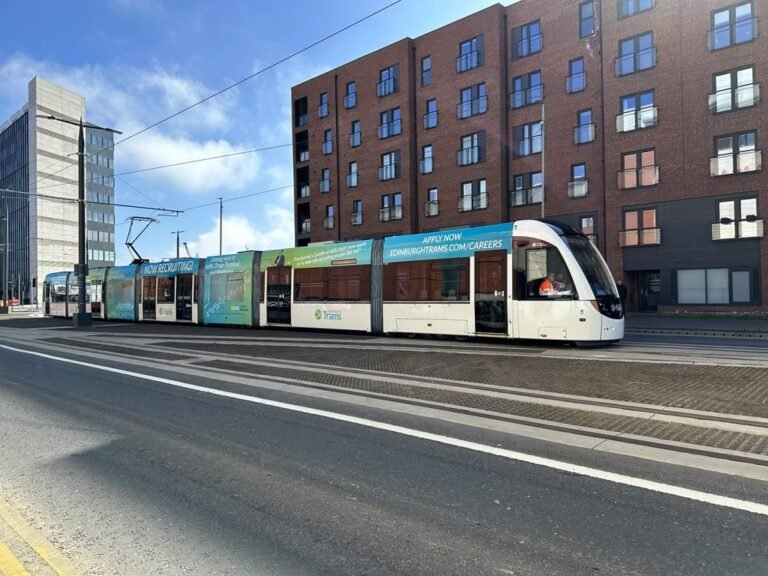The extension of the Edinburgh tram network to Newhaven will carry its first passengers from 7 June, the council has announced.
The successful completion of daylight trials in April and May marks a milestone in its program to extend the tram network so passengers can travel from the city’s airport to the Firth of Forth.
The expansion project gained council approval in March 2019 and SFN’s joint venture of Sacyr, Farrans and Neopul was engaged by Edinburgh City Council to implement the main infrastructure and systems contract of 207.3 million pounds.
Main construction work began in November 2019 involving Farrans and their JV partners plus Morrison’s Utility Services (part of M Group Services), Turner & Townsend and the council.
SFN was responsible for the tram’s design, tracks and other infrastructure, including conduits, drainage, overhead line engineering, the installation of 228 overhead pylons and roadworks.
The JV also conducted system trials and testing with Siemens, one of its subcontractors.
Some tweaks to the expansion still need to be completed.
Examples include the Picardy Place island site, where construction began in February and was completed in June.
Specific challenges to expanding a tram network in a busy city center include complex diversions of public services, archaeological finds and the need to move human remains.
The SFN team knew they would have to exhume the bodies from an ancient cemetery and planned accordingly, but the volume of bones was a surprise.
“While the project had hoped to excavate 200 bodies at the historic parish church in South Leith, the grand total was almost 400 and was in a larger area than originally planned,” said a Farrans spokesman. Construction news.
Edinburgh council’s final business case had foreseen “significant risk associated with underground obstructions, due to the poor quality of records available at utility locations along the route”, the spokesman added.
But even with extensive site investigation work, it was “inevitable that a large volume of unknown services would be encountered given the historic nature of the full route and the number of people living in the area”, particularly because Leith Walk is the most densely populated. area of Scotland.
For example, the excavation of a large Victorian sewer along Constitution Street led to design changes and complex utility diversions were required at the junction of Jane Street with Leith Walk, the spokesman said.
The 4.69km of planned tram track has been designed and SFN said main construction had finished at the network’s eight new stops: Picardy Place, McDonald Road, Balfour Street, Foot of the Walk, The Shore, Port of Leith, Ocean Terminal. and Newhaven.
Almost all the drainage pipes have been installed, although 1 per cent of this work remains to be done, according to the latest Trams in Newhaven update.
The Scottish Government remains committed to expanding Edinburgh’s tram network. His 20-year vision in the second Strategic Transport Projects Review (STPR2), published last December, includes a map showing “potential future tramway extensions” in Newbridge, Granton, Dalkeith and Musselburgh in the east of the city
However, STPR2 did not include funding figures because of the “enormous current uncertainty around the available capital budget and fiscal policy”, Transport Secretary Michael Matheson said at the time.
Unhappy story
The Edinburgh tram project has been controversial since its inception.
It was first planned by the council as a three-line network covering most of the city and costing £375m.
However, successive cost overruns and disputes with contractors reduced the scope of the project to cover 16 stops between Edinburgh Airport and York Place.
By the time construction began in May 2008, the cost had grown to £521 million and rose further to £776 million when the first tram service was launched in May 2014.
The service has been making operating losses since 2018, and a report in August by the Auditor General of Scotland found the project had been poorly planned and affected by “disputes with contractors over contract terms, agreements of excessively complex government”. [and] a lack of clear leadership” on the part of the council.

